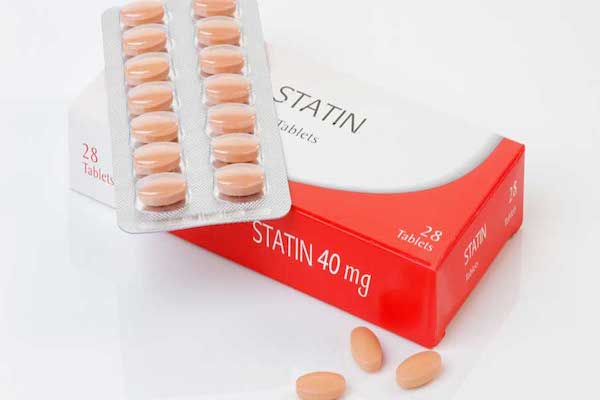Abstract
Statin is known as one of the most commonly prescribed medicines in the United States (Bhattacharya et al., 2014). This drug is widely used with the aim to prevent risk of stroke and cardiovascular diseases as well as reduction of mortality from these diseases (Mohammadian et al., 2015; Ong et al., 2014). Several studies have recently paid attention to roles of Statins in increasing the risk of type 2 diabetes mellitus. Based on results of several clinical trials on prevention of cardiovascular diseases, Statin leads to an increased risk of type 2 diabetes mellitus (T2DM) (Crandall et al., 2017). This drug leads to an increase at fasting blood sugar, glycosylated hemoglobin (HbA1c) and blood sugar levels in recipients (Mohammadian et al., 2017; Ridker et al., 2012).
Dear Editor-in-Chief
Statin is known as one of the most commonly prescribed medicines in the United States Bhattacharya et al., 2014. This drug is widely used with the aim to prevent risk of stroke and cardiovascular diseases as well as reduction of mortality from these diseases Mohammadian et al., 2015Ong et al., 2014. Several studies have recently paid attention to roles of Statins in increasing the risk of type 2 diabetes mellitus. Based on results of several clinical trials on prevention of cardiovascular diseases, Statin leads to an increased risk of type 2 diabetes mellitus (T2DM) Crandall et al., 2017. This drug leads to an increase at fasting blood sugar, glycosylated hemoglobin (HbA1c) and blood sugar levels in recipients Mohammadian et al., 2017Ridker et al., 2012. According to a meta-analysis study by Sattar and et al on 13 clinical trials about Statins in 91140 participants, the treatment with Statin led to an increase of 9% in the risk of diabetes in a way that the Hazard Ratio (HR) of disease in subjects, who received Statin, was equal to 1.09 (confidence interval (CI) of 95%, (1.02-1.17)) compared with those who did not receive Statin Sattar et al., 2010. According to a clinical trial by Jill P Crandall et al with the aim to investigate effects of three types of intervention (Metformin, Placebo or lifestyle change) in preventing or delaying type 2 diabetes mellitus in a group of people at high risk of diabetes, Statins led to an increased hazard of diabetes mellitus during a 10-year follow up period regardless of the group therapy, so that the HR of diabetes mellitus in subjects, who received Statin, was 1.36 (CI of 95%, (1.17 to 1.58)) compared to other people Sattar et al., 2010. Therefore, based on results of clinical trials, despite the fact that Statin therapy leads to a slight increase in the risk of diabetes, this risk is low and physicians need to focus on the beneficial role of this drug in reducing cardiovascular diseases; hence, clinical recommendations for patients, who suffer from cardiovascular diseases, or people at high risk of these diseases should not be changed; and Statin therapy is still recommended to these patients.
Abbreviations
CI:Confidence Interval
HbA1c: Glycosylated hemoglobin (A1c)
HR: Hazard Ratio
T2DM: Type 2 diabetes mellitus
References
-
R.
Bhattacharya,
M.
Ajmera,
S.
Bhattacharjee,
U.
Sambamoorthi.
Use of antidepressants and statins and short-term risk of new-onset diabetes among high risk adults. Diabetes research and clinical practice.
2014;
105
:
251-260
.
View Article Google Scholar -
J.P.
Crandall,
K.
Mather,
S.N.
Rajpathak,
R.B.
Goldberg,
K.
Watson,
S.
Foo,
R.
Ratner,
E.
Barrett-Connor,
M.
Temprosa.
Statin use and risk of developing diabetes: results from the Diabetes Prevention Program. BMJ open diabetes research & care.
2017;
5
:
e000438
.
View Article Google Scholar -
M.
Mohammadian,
S.
Hosseini,
M.
Sadeghi,
N.
Sarrafzadegan,
H.
Salehiniya,
H.
Roohafza,
S.
Khazaei,
A.
Mohammadian-Hafshejani.
Trends of 28 days case fatality rate after first acute myocardial infarction in Isfahan, Iran, from 2000 to 2009. ARYA atherosclerosis.
2015;
11
:
233-243
.
-
M.
Mohammadian,
H.
Salehiniya,
S.
Khazaei,
A.
Mohammadian-Hafshejani.
Intensification of Metformin treatment in diabetic patients with Insulin versus Sulfonylureas. Biomedical Research and Therapy.
2017;
4
:
1341-1343
.
View Article Google Scholar -
K.L.
Ong,
D.D.
Waters,
M.
Messig,
D.A.
DeMicco,
K.A.
Rye,
P.J.
Barter.
Effect of change in body weight on incident diabetes mellitus in patients with stable coronary artery disease treated with atorvastatin (from the treating to new targets study). The American journal of cardiology.
2014;
113
:
1593-1598
.
View Article Google Scholar -
P.M.
Ridker,
A.
Pradhan,
J.G.
MacFadyen,
P.
Libby,
R.J.
Glynn.
Cardiovascular benefits and diabetes risks of statin therapy in primary prevention: an analysis from the JUPITER trial. Lancet (London, England).
2012;
380
.
View Article Google Scholar -
N.
Sattar,
D.
Preiss,
H.M.
Murray,
P.
Welsh,
B.M.
Buckley,
A.J.
de Craen,
S.R.
Seshasai,
J.J.
McMurray,
D.J.
Freeman,
J.W.
Jukema.
Statins and risk of incident diabetes: a collaborative meta-analysis of randomised statin trials. Lancet (London, England).
2010;
375
.
View Article Google Scholar
Comments

Downloads
Article Details
Volume & Issue : Vol 4 No 12 (2017)
Page No.: 1850-1852
Published on: 2017-12-18
Citations
Copyrights & License

This work is licensed under a Creative Commons Attribution 4.0 International License.
Search Panel
Pubmed
Google Scholar
Pubmed
Google Scholar
Pubmed
Google Scholar
Pubmed
Google Scholar
Pubmed
Search for this article in:
Google Scholar
Researchgate
- HTML viewed - 5358 times
- Download PDF downloaded - 1923 times
- View Article downloaded - 0 times
 Biomedpress
Biomedpress

